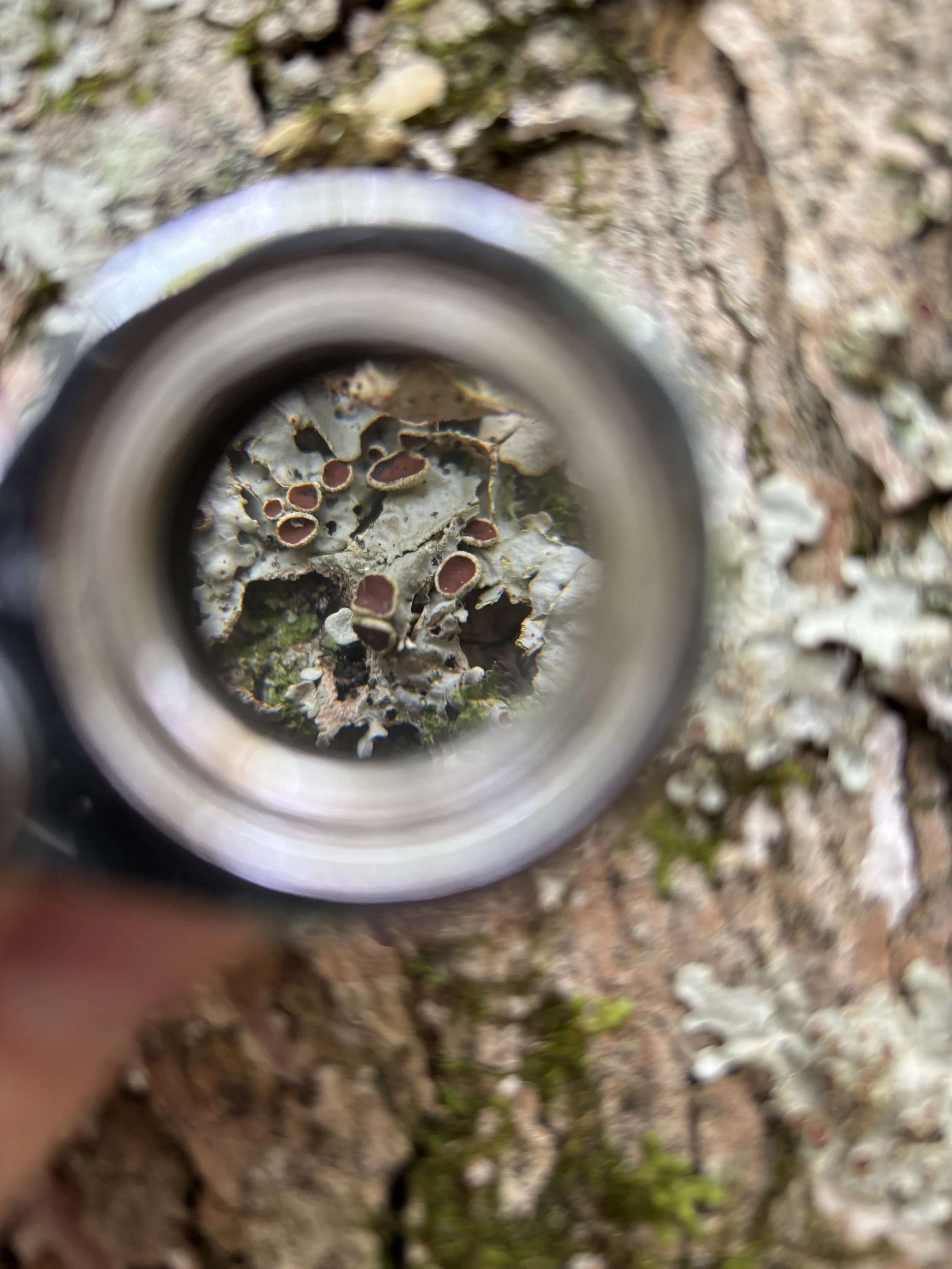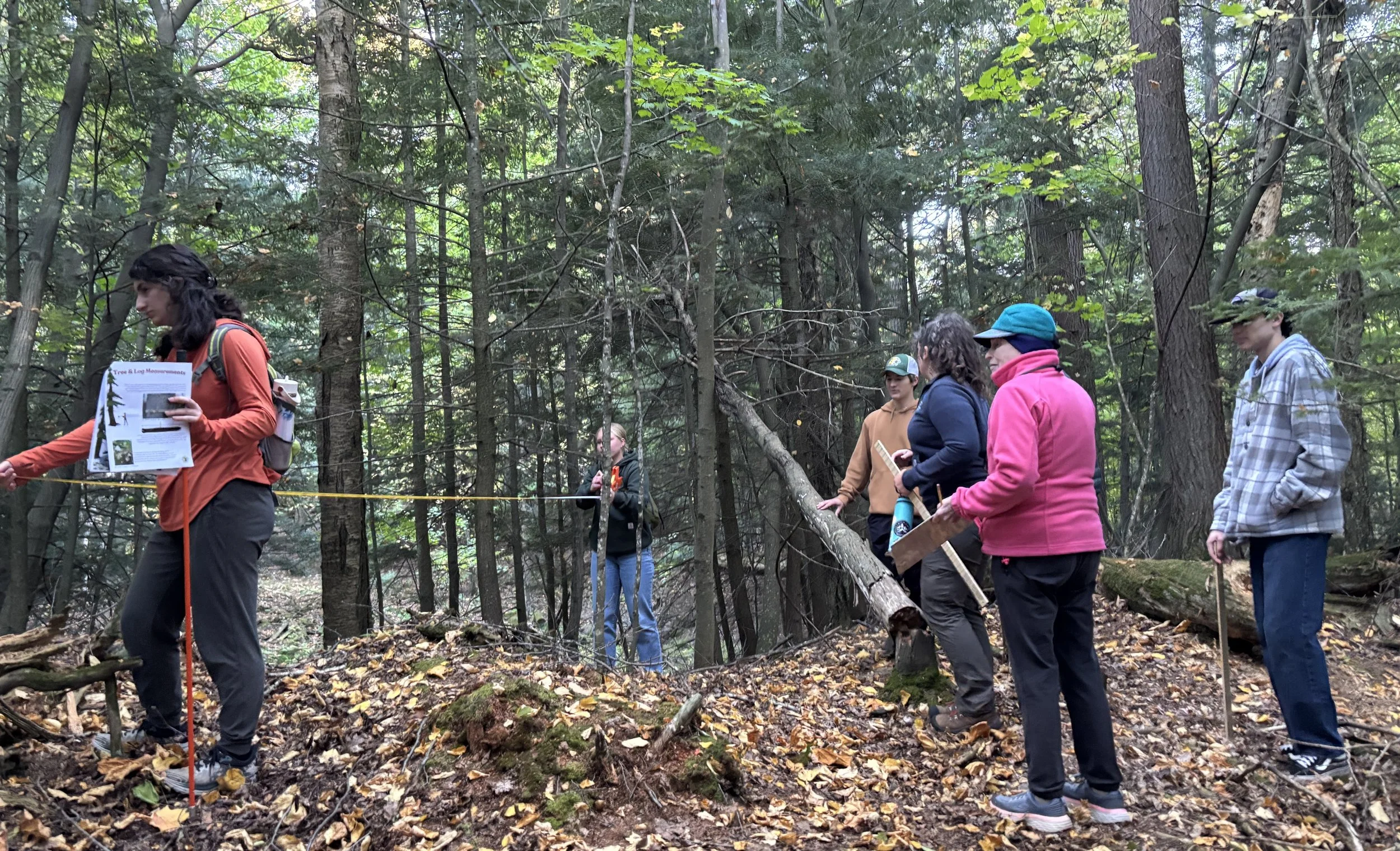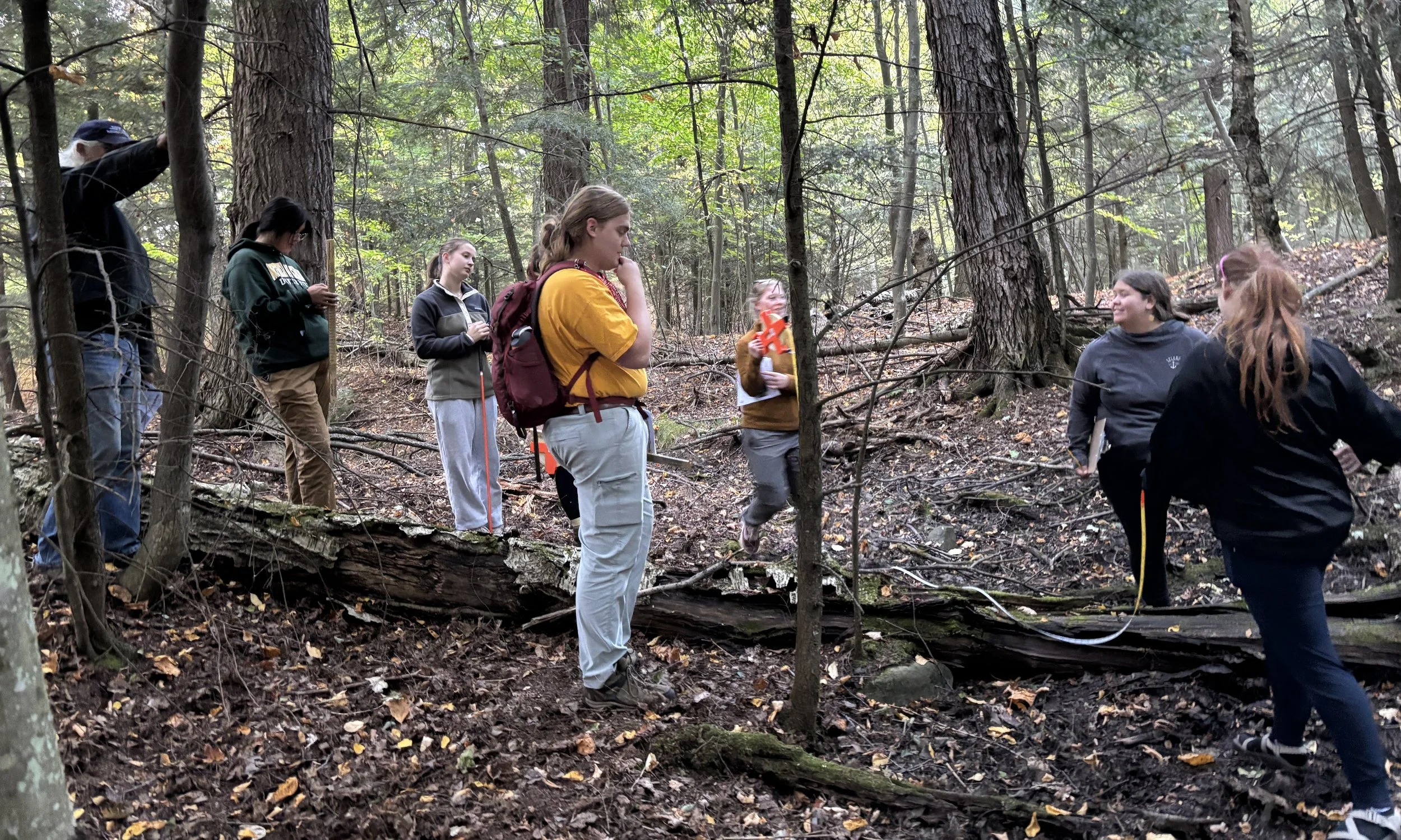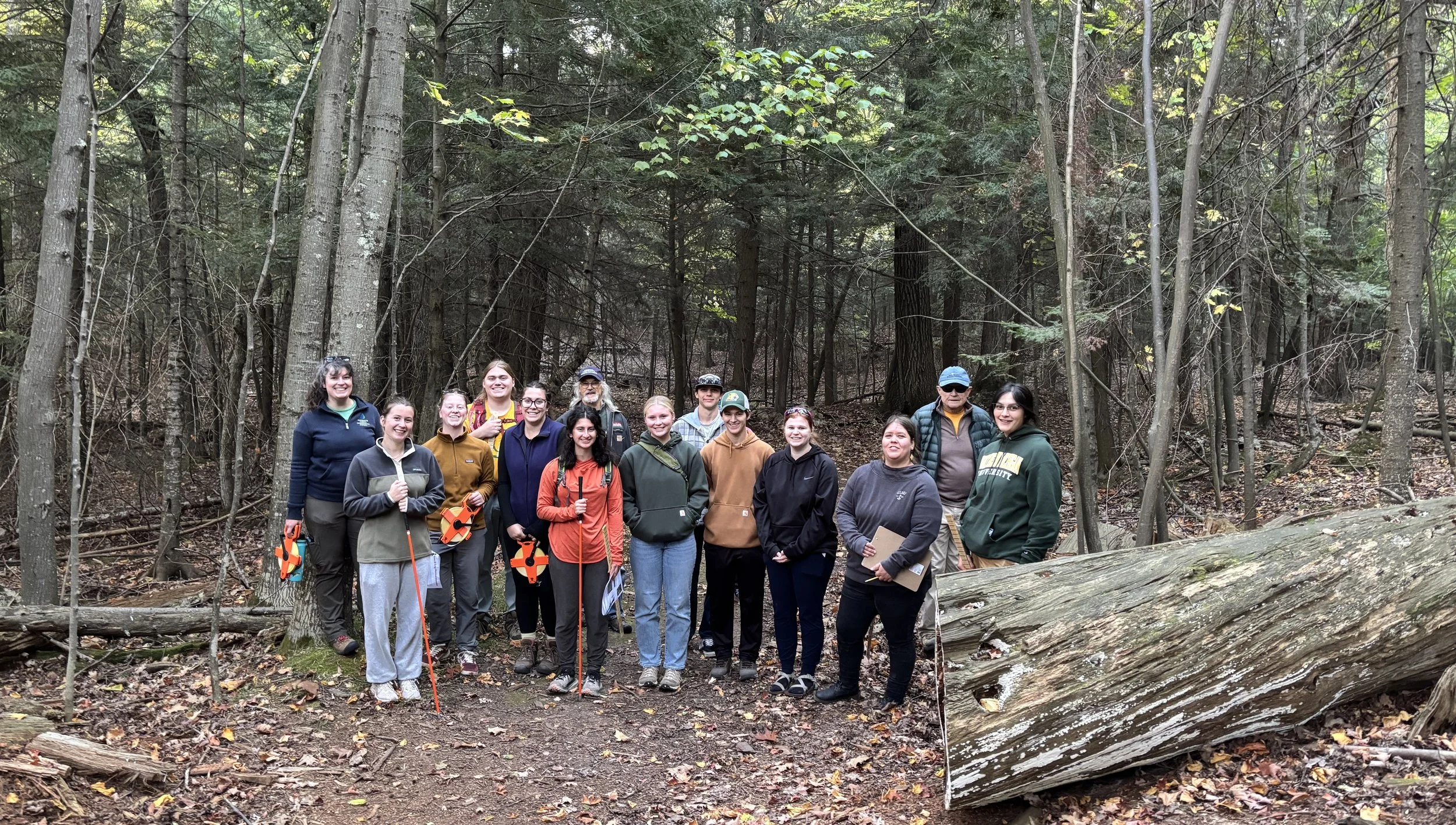Workshop Series Expands Forest Literacy to Strengthen Public Engagement
By Network Manager Nick Sanchez
Taking a hike through a forest can be a feast for the senses but a lot can be missed if you don’t stop to smell the ponderosa. The chances of observing wildlife, hidden fungi or even features that can help indicate the age and health of a forest are improved by slowing down and taking it all in. To help forest enthusiasts see those clues and gain first-hand experience in forest science, the Old-Growth Forest Network is piloting a public workshop series to provide a closer look.
Some lichens that grow on trees can be important indicators of older forests.
Working with Environment America, Marquette Conservation District and the Michigan Society of American Foresters, these workshops have so far taken place at Pilcher Park in Joliet, IL near Chicago and at Marquette’s Presque Isle Park in Michigan’s Upper Peninsula. During the fall meeting of the Michigan Society of American Foresters, the Old-Growth Forest Network had a chance to engage dozens of students from college natural resources programs around the state.
Attendees learn how to measure the diameter of an eastern hemlock using a tree scale stick.
With some fast-paced instruction, participants were tasked with keying in on some of the important measurable features of old-growth forests such as larger trees, snags, and fallen logs, and the progression of decay in the larger “deadwood”. These are some of the key features which have special values and support biodiversity not typically found in younger forests.
Working in teams, participants identified, measured and photographed important features of old forests in transects placed throughout the forest. By introducing basic forest measurement skills and a rapid assessment method, this community science project engages participants in their local forests and supports the continued protection of these rare forests by building forest literacy and inspiring advocacy at the community level.
Each participant has a particular role as the team gathers data along each transect.
All forests have importance but the Network is particularly interested in helping to protect and engage people in places where larger sized trees, logs and snags are more common compared to the surrounding landscape. This, of course, includes old-growth forests, but it also includes our late-successional mature forests, the future old-growth, which are less likely to have adequate protections in place. These are places where the social and biological values of the forest skyrocket. Ecological services like the filtration, storage and provision of clean water are maximized in these stages of growth. They are also the most valuable from an economic perspective which means they are potentially at risk of degradation or loss of those valuable features and services.
Students measure and assign a decay class of large logs that have fallen in the transect.
Walking a transect through the forest limits distractions and narrows focus by setting boundaries for the observer. With a representative area covered, this structured exercise helps to put the forest into perspective by bringing into focus what the common conditions are, which is hard for the eyes to do alone. The opportunity to see the forest through a forester’s lens gives participants the skills and confidence to better advocate for the places they love - an incredible investment in the future of our forests. This workshop series will continue to evolve with more opportunities offered in the coming months.
Students from Northern Michigan University and other local volunteers gain valuable experience in the forest.





